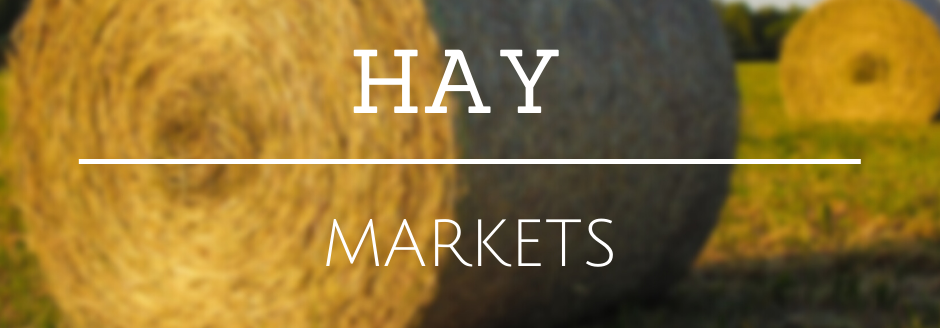Colorado—In the Sept. 8 report, trade activity moderate on very good demand for horse hay markets. According to the National Drought Mitigation Center’s Condition Monitoring Observer Reports, numerous drought impact reports have been submitted during the past 30-day period. Impacts include reduced crop yields, poor pasture conditions, and the need for supplemental feeding of livestock. According to the NASS Colorado Crop Progress Report for the week ending Sept. 4, third cutting alfalfa harvested is 60%, fourth cutting 4%. Stored feed supplies were rated 25% very short, 22% short, 50% adequate, and 3% surplus.
Missouri—In the Sept. 8 report, compared to last report, hay supplies are light to moderate. Hay movement is moderate, demand is moderate to good and prices are steady to firm. As expected several farmers have pulled hay equipment back out of the sheds now. Although grass still has some time to grow before frost, several farmers seem to be trying to make some hay now as they have just a small window before it will be time to climb into the combines and begin grain harvest. There is still some counties right along the Kansas state line that are very dry but much of the area that was severally dry earlier in the summer has seen quite the turn around. Grass and greened and begin to grow much faster than probably expected given how dry it was. Hay sales have slowed ever so slightly from high levels they were the last two months as producers are waiting to see how much fall pasture they end up with.
Nebraska—In the Sept. 8 report, compared to last week, round bales of alfalfa sold fully steady, square bales steady. Round bales of grass or native prairie grass steady. Dehydrated alfalfa pellets in the east sold $20 higher and steady in the Platte Valley. Demand was good for all available forages. Once again, out of state buyers from the Southern Plains trying to pick off loads of Nebraska grown alfalfa. Some hay is getting shipped into Nebraska from states north of the border. These loads are helping with some of the much-needed hay supply the Nebraska livestock owners are short.
Oklahoma—In the Sept. 9 report, hay continues to get tighter. Supply is getting lower, demand is getting higher along with prices are beginning to change again, and we haven’t even begun the fall season yet. The rain we did receive last week did help some, but it may have been too late to see another cutting of hay. For the drought according to the Oklahoma Mesonet exceptional drought is at 2.19 percent. Extreme drought is at 47.7 percent. Severe drought is at 84.8 percent. Moderate drought is at 96.5 percent. Abnormally dry is at 99.9 percent. Next report will be Sept. 23.
Texas—In the Sept. 2 report, compared to the last report, hay prices remain firm in all regions. Hay demand remains good on moderate to active trading activity. Pastures have recovered across much of the state due to recent rains, and many producers are beginning sew in winter wheat. However, weeds have become a nuisance now that these droughted out pastures have received some rain. According to the US Drought Monitor, rainfall records show that the previous two weeks ranked in the top 10 wettest for this time of year in many locations in the southern region of the US. This has led to broad 1- and 2-category improvements across large parts of the south. Next report will be Sept. 16.
New Mexico—In the Sept. 9 report, compared to last week, alfalfa hay prices steady. Trade very active, demand very good. Supplies tight for top quality hay. The southern and eastern part of the state are finished with the fifth cutting. Sixth cutting is underway in some areas. Some hay producers reporting an abundance of black hay.
South Dakota—In the Sept. 9 report, compared to last week, alfalfa and grass hay remain firm. Good demand for all types of hay and qualities of hay. Drought conditions expanded this week as very hot weather, for this late in the season. Third cutting tonnage was limited due to the hot, dry conditions. Corn silage harvest complete in the driest of areas.
Wyoming—In the Sept. 8 report, compared to last week, all reported forages sold fully steady. Demand was good. Most hay staying in the local trade market with some squares going to out of state buyers. Mostly dry conditions across the state. Some areas in the west did report some rain showers at the end of last week. Mostly hot dry weather across the state this week. Producers in the west are on second cutting and the producers in the east starting on third cutting.
Montana—In the Sept. 9 report, compared to last report, hay sold steady to $10 lower. Demand for hay remains moderate for mostly moderate offerings. Larger supplies and lower usage is weighing on the market as most ranchers have fewer cows and calves to feed going into winter. This, coupled with lower prices from western buyers and exporters has slowed sales. Buyers are doing more shopping around this year and buying with much less urgency compared to last fall and winter. Hay prices nearest drought stricken areas remain the highest.


